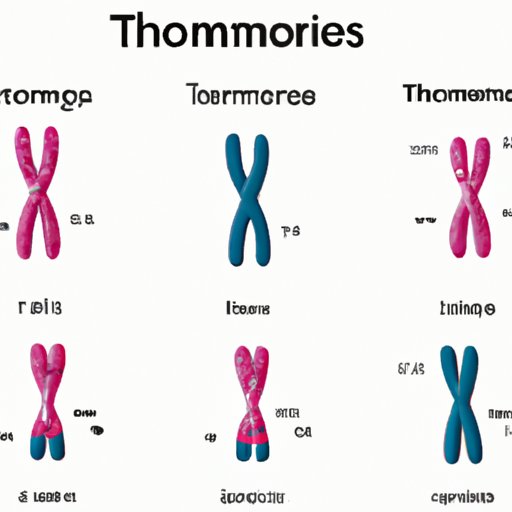Introduction
Genetics is an essential field of study that helps us understand the inheritance and diversity of life forms. Understanding genetics is vital for both our health and life. Basic concepts such as homologous chromosomes, chromatids, zygotes, gametes, and tetrads form the foundation of genetics. In this article, we will explore these concepts in detail to understand how these biological processes work and impact our lives.
Understanding the basics of genetics: Homologous chromosomes, chromatids, and more
Homologous chromosomes are a pair of chromosomes that contain the same genes. Humans have 23 homologous chromosome pairs. These chromosomes are essential for the inheritance of traits from parents to offspring.
Chromatid refers to one of the two identical replicas of a chromosome that are connected by a centromere. During cell division, these chromatin fibers condense to form chromosomes that are necessary for the accurate transfer of genetic information from parent cells to daughter cells.
Genes are functional units of DNA that contain information to create unique proteins or RNA molecules. Alleles refer to different versions of the same gene that contributes to genetic variation. DNA is a long chain of nucleotides that makes up genes and chromosomes.
What happens when gametes meet? A closer look at zygotes and how they form
Gametes are reproductive cells that unite during sexual reproduction. Sperm cells are the male gametes, and egg cells are the female gametes. The process of fertilization occurs when a sperm cell fuses with an egg cell. The fertilized egg is called a zygote.
The zygote contains genetic materials from both parents and is a single cell that begins developing into an organism. Genetic diversity in offspring is crucial for the survival of species, and the formation of a zygote is one of the mechanisms for creating this diversity.
The importance of pairing homologous chromosomes for genetic variety
The pairing of homologous chromosomes is vital for genetic variety in offspring. During the process of meiosis, homologous chromosomes pair up, and DNA segments are exchanged between them. This exchange is called ‘crossing over,’ and it results in genetic recombination.
During meiosis, homologous chromosomes can also align independently of each other, which is called independent assortment. The way in which homologous chromosomes are arranged during cell division results in new genetic combinations, leading to genetic diversity in offspring.
Exploring cell division: How tetrad formation impacts genetic diversity
Tetrads are a group of four chromatids formed by the pairing of two homologous chromosomes. Tetrads play a vital role in creating genetic diversity in offspring. During meiosis, these tetrads can line up in multiple ways, which leads to genetic recombination and new gene combinations.
Tetrad formation and resulting genetic recombination provide another mechanism for creating diverse offspring. As the chromosomes move apart during cell division, the resulting daughter cells can have completely different genetic information, contributing to genetic variation.
From Chromatids to Zygotes: Tracing the Journey of Genetic Material
During cell division, genetic material passes from chromatids to daughter cells. Mitosis and meiosis are two kinds of cell division responsible for the accurate transfer of genetic material. Mitosis results in two identical daughter cells, while meiosis results in four non-identical daughter cells.
The role of homologous chromosomes, tetrads, and chromatids in the process of cell division significantly impacts the accuracy of genetic transfer and contributes to increasing genetic variation, leading to diversity in life forms.
Homologous Chromosomes: How They Help Determine Your Traits and Health
Homologous chromosomes contain the genetic information that contributes to traits and health. Errors in homologous chromosome pairing can cause serious genetic disorders such as Down’s syndrome and Turner’s syndrome.
These disorders occur when there is an abnormal number of chromosomes. For example, an extra copy of chromosome 21 causes Down’s syndrome, and an inactive X-chromosome results in Turner’s syndrome.
The Role of Genes and Chromosomes in Determining Genetic Inheritance
Genes and chromosomes play a critical role in determining genetic inheritance. Some genes are dominant, while others are recessive. Dominant genes are always expressed, while recessive genes are only expressed in the absence of dominant genes. Genetic disorders can be inherited when both parents pass on the recessive gene to their offspring.
Conclusion
Understanding the basics of genetics is essential for biology and medicine. Homologous chromosomes, chromatids, zygotes, gametes, and tetrads form the foundation of genetics, and every process is interconnected and vital for genetic variation in offspring.
Learning more about genetics and how it impacts our lives is an ongoing process. We must continue to explore this fascinating field to advance our understanding of fundamental biological processes that determine our health and life.
